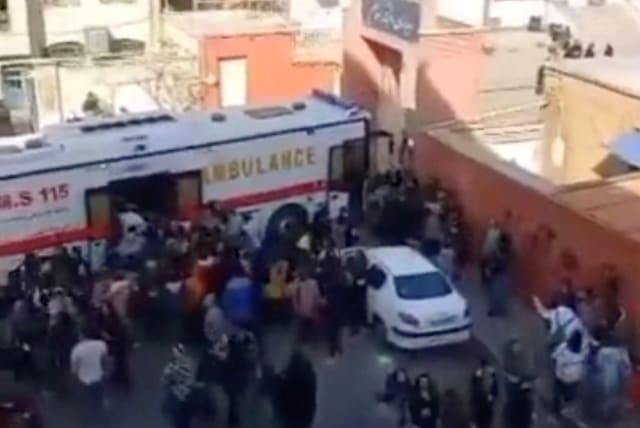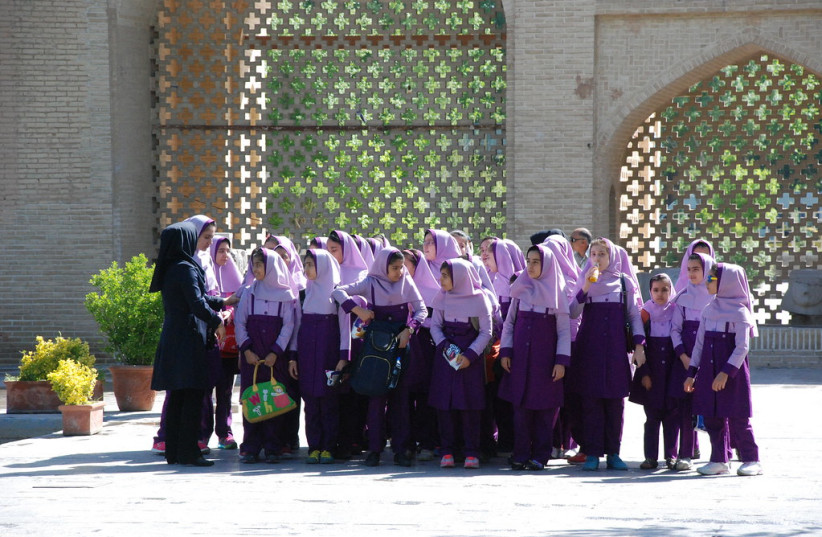Iran mobilizes misinformation about school poisonings - analysis

Iranian pro-regime media are afraid that the regime will be blamed, so they have deployed a number of theories about what happened in order to distract attention from the events.
Six months after it killed a woman for not wearing a headscarf, sparking mass protests, the Iranian regime is now under scrutiny for reports of mass poisonings of schoolgirls.
As the international community works to shed light on the alleged poisonings and try to determine what is happening, the regime has finally acknowledged the poisonings. However, now it is blaming the opposition as well as outsiders, or claiming the poisonings are “mass hysteria” and a conspiracy.
Before analyzing how Iran’s media are deploying a regime narrative that paints the poisonings as a conspiracy, let’s look at the reports.
What do the reports say about the Iranian poisonings?
The BBC reported that “more than 1,000 Iranian students – mostly schoolgirls – have fallen ill over the past three months in what has been reported to be a wave of poisonings, possibly with toxic gas,” adding that 58 schools have been affected.
“Many patients have reported similar symptoms: respiratory problems, nausea, dizziness and fatigue. So what could be behind all these reports – and how have they spread across the country?”
Germany has called for a transparent investigation. German Foreign Minister Annalena Baerbock tweeted, “Girls must be able to go to school without fear.... This is nothing less than their human right. All cases must be fully investigated.” The United Nations has backed the call by Germany.
Iranians are now protesting the poisonings, in addition to the ongoing protests throughout the country. CNN noted, “On Wednesday, Iran’s semi-official Mehr News reported that Shahriar Heydari, a member of parliament, cited an unnamed ‘reliable source’ in saying that ‘nearly 900 students’ from across the country had been poisoned so far.”
Who is Iran blaming for the poison?
Iranian pro-regime media are afraid that the regime will be blamed, so they have deployed a number of theories about what happened in order to distract attention from the events.
Fars News, which is not only pro-regime but also close to the Islamic Revolutionary Guard Corps, called the incidents “mass hysteria.” The report claimed, “In sociology and psychology, collective hysteria or public excitement is a phenomenon in which, as a result of rumors or fear, illusions of a common threat, whether real or imagined, spread among a group or society.”
The media organization said that while it is examining the events and considering that “mischief” or use of “poison gas” might be involved, it asserts that this is a result of “mass hysteria” designed to influence public opinion.
THE REPORT then deflects from the story by quoting Western experts, a classic play in Iranian or Russian media, where Western critics are quoted to deflect from regime abuses. According to the Iranian report, the mass poisonings are similar to “events in Palestine, Egypt and Afghanistan.”
According to the report, a similar event actually happened in Afghanistan in 2009, when schoolgirls felt sick from toxic gases.
“Students in another women’s Islamic school experienced headaches, nausea, abdominal pain and blurred vision. Some faint and are taken to the hospital. Is this story related to recent events in Iran? No, it happened in the West Bank,” the report says, jumping into a discussion about how many girls schools in Afghanistan were targeted by similar symptoms – which the Taliban denied involvement in – and chalks it up to mass hysteria.
The report then references incidents it says happened in the West Bank. It told a story from March and April 1983 in which Palestinians said they felt dizzy and faint, leading to nearly 1,000 hospitalizations. At the time, Palestinians and Israelis were glued to the controversy, with the Palestinians blaming “Israeli settlers” and Israel saying it was the work of “radical Palestinian factions.” Later reports blamed the hospitalizations on a “psychological” dimension.”
The Iranian regime is now arguing that its own long list of school poisonings is linked to unsolved cases in Afghanistan and the West Bank. The regime would likely have blamed these cases on Israel and the US had it not been for today’s expediency in which the regime wants the world to believe the poisonings are mass hysteria.
Tasnim News simply said the mass poisonings have not been proven; that they could be a series of normal incidents that have been knitted together into a larger narrative. The account then goes into a long bizarre claim that the Iranian regime didn’t use poison gas during the war with Iraq in the 1980s, whereas the Iraqis did use gas, as if this proves that today the regime wouldn’t have access to ways to poison schoolgirls. The report mocks critics abroad who allege that the regime is behind the poisonings.
This shows how the regime is so concerned about poisonings and their after-effects in the West that it is willing to cast a wide net of blame, from claiming mass hysteria to blaming the opposition, to hearkening back to the 1980s, to distract from it.
What is interesting here is that the regime seems to admit that something has happened, but merely wants to downplay it. The report at Tasnim notes that while critics say the regime wants to punish women for protesting, it would be unlikely to punish them by poisoning, as though to say, “If we did it, we wouldn’t do it that way.”
Jerusalem Post Store
`; document.getElementById("linkPremium").innerHTML = cont; var divWithLink = document.getElementById("premium-link"); if (divWithLink !== null && divWithLink !== 'undefined') { divWithLink.style.border = "solid 1px #cb0f3e"; divWithLink.style.textAlign = "center"; divWithLink.style.marginBottom = "15px"; divWithLink.style.marginTop = "15px"; divWithLink.style.width = "100%"; divWithLink.style.backgroundColor = "#122952"; divWithLink.style.color = "#ffffff"; divWithLink.style.lineHeight = "1.5"; } } (function (v, i) { });

